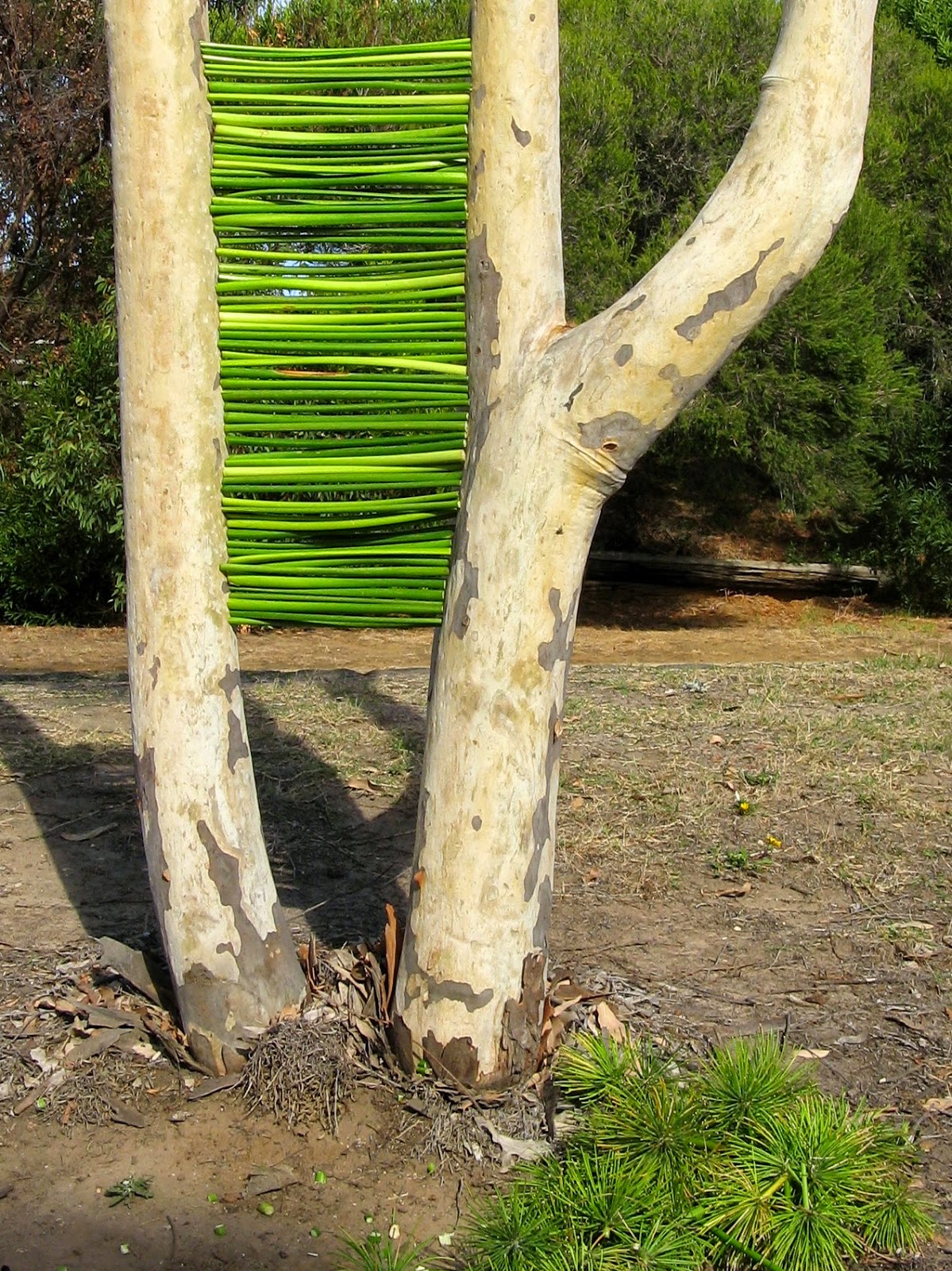This week the annual Melbourne International Flower and Garden Show is being held in the grand 1880 Royal Exhibition Building. This is a very popular event having a wide variety of floristry-related displays and demonstrations within the building and gardening-related displays in the extensive parkland outside the building.
One of the most unusual and eye-catching displays was a memorial of hand-crocheted red poppies commemorating the soldiers who died in WW I.
In the foreground of this photo of the huge main hall, seats are lined up for one of the many demonstrations.
The Ikebana International exhibit, viewed from the gallery above the main floor, shows how the work of the five schools were related to each other in the design and in their use of certain thematic materials.
Two teacher members of Ikebana International created individual exhibits this year.
Emily Karanikolopoulos * created this very strong design using large diameter bamboo, amaranth, strelitzia nicoli leaves and agapanthus.
This side view shows how the design is continued onto the floor.
Chieko Yazaki created this three piece work representing the elements: Heaven, Earth and Man; which is the reading of the characters on the back wall.The vertical lines of bamboo on the left are the 'heaven' element. Congratulations to Chieko for receiving 4th place.
Greetings from Christopher
29th March 2015
* click on the blue text for further information
Greetings from Christopher
29th March 2015
* click on the blue text for further information
























